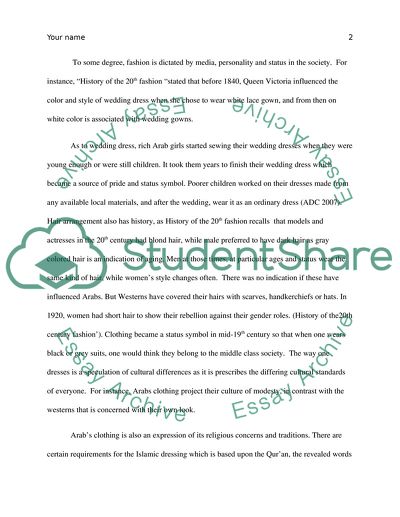Cite this document
(Arabic Clothes and Costumes Research Paper Example | Topics and Well Written Essays - 2500 words, n.d.)
Arabic Clothes and Costumes Research Paper Example | Topics and Well Written Essays - 2500 words. Retrieved from https://studentshare.org/culture/1762435-arabic-clothes-and-costumes
Arabic Clothes and Costumes Research Paper Example | Topics and Well Written Essays - 2500 words. Retrieved from https://studentshare.org/culture/1762435-arabic-clothes-and-costumes
(Arabic Clothes and Costumes Research Paper Example | Topics and Well Written Essays - 2500 Words)
Arabic Clothes and Costumes Research Paper Example | Topics and Well Written Essays - 2500 Words. https://studentshare.org/culture/1762435-arabic-clothes-and-costumes.
Arabic Clothes and Costumes Research Paper Example | Topics and Well Written Essays - 2500 Words. https://studentshare.org/culture/1762435-arabic-clothes-and-costumes.
“Arabic Clothes and Costumes Research Paper Example | Topics and Well Written Essays - 2500 Words”, n.d. https://studentshare.org/culture/1762435-arabic-clothes-and-costumes.


